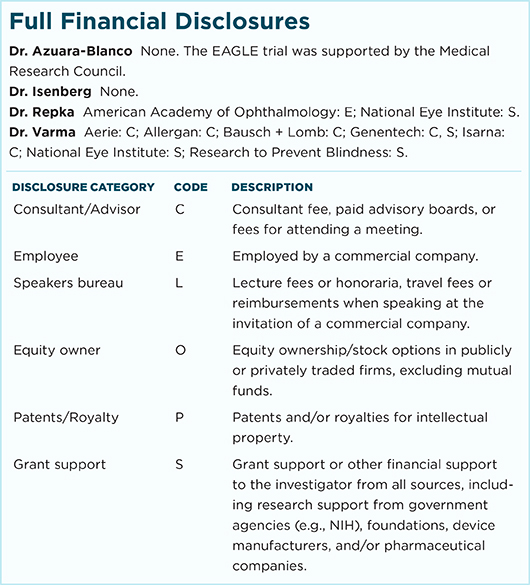Download PDF
In places with scarce medical resources, bacterial keratitis can sentence a child to a lifetime of blindness. “In much of the world, this is the No. 1 cause of preventable blindness in children,” said pediatric ophthalmologist Sherwin I. Isenberg, MD. “The World Health Organization has estimated that there are currently more than 400,000 children who are blinded by corneal scarring secondary to corneal infections.”
An inexpensive treatment alternative? Thus, in a multinational clinical trial of treatments for bacterial keratitis, Dr. Isenberg and colleagues Leonard Apt, MD, and Gary N. Holland, MD—along with collaborators in Los Angeles, India, and the Philippines—were heartened to find no significant difference in effectiveness between inexpensive and widely available povidone-iodine 1.25% drops and 2 less-accessible antibiotic medications.1
“The idea was to come up with something that would be applicable to the developing world. To do so, a medication has to be No. 1, cheap; No. 2, effective; and No. 3, widely available. Povidone-iodine is one of the few drugs that could fit those criteria,” said Dr. Isenberg, who is professor of ophthalmology at the University of California, Los Angeles.
Trial details. This prospective trial randomized 172 bacterial keratitis patients in 2 countries to receive either povidone-iodine or a topical antibiotic commonly used there: neomycin–polymyxin B–gramicidin in the Philippines or ciprofloxacin 0.3% in India.
All patients were hospitalized for at least 7 days, which was the customary practice at the study centers at that time. To ensure compliance with the study’s rigid dosing schedule, nurses instilled drops into the affected eyes hourly around the clock for 3 days; after that, treatment was slowly tapered over 0 to 15 days. The corneal infections resolved in 54% of the eyes treated with povidone-iodine compared with 52% of those treated with antibiotic.
Learning from earlier studies. Dr. Isenberg also helped lead studies in Kenya in the 1990s that proved the effectiveness of povidone-iodine 2.5% drops in preventing neonatal conjunctivitis.2 “Before our studies, many babies there and elsewhere around the world were going blind from gonorrhea and chlamydia,” he said.
Similarly, povidone-iodine 1.5% represents an affordable, readily available option that would enable health care workers and clinics in remote and underserved areas to prevent corneal scarring and blindness secondary to bacterial keratitis. “In many places they cannot afford antibiotics, or they simply are not available,” Dr. Isenberg said.
—Linda Roach
___________________________
1 Isenberg SJ et al. Am J Ophthalmol. Published online Oct. 27, 2016.
2 Isenberg SJ et al. N Engl J Med. 1995;332(9):562-566.
___________________________
Relevant financial disclosures—Dr. Isenberg: None.
For full disclosures and disclosure key, see below.

More from this month’s News in Review